social reform 1800 to 1914
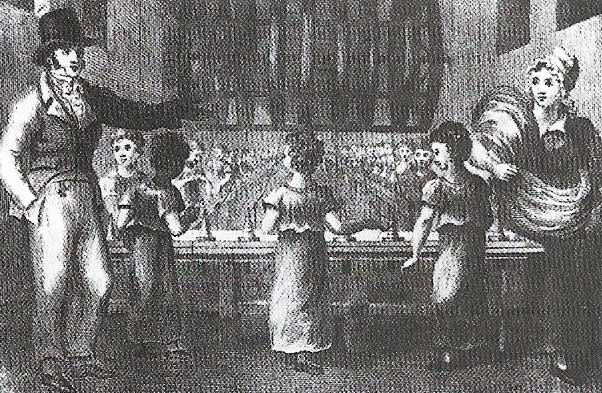
Figure 1. The use of child and female labor in factories and mines during the Industrial Revolution was widespread. In the early 1830s, nearly half the labor force in the cotton mills was under 21, and of the adults more than half were women. Hours and conditions were regulated only by the benevolence of employers, and a working week exceeding 90 hours was common until the 1833 Factory Act became effective.
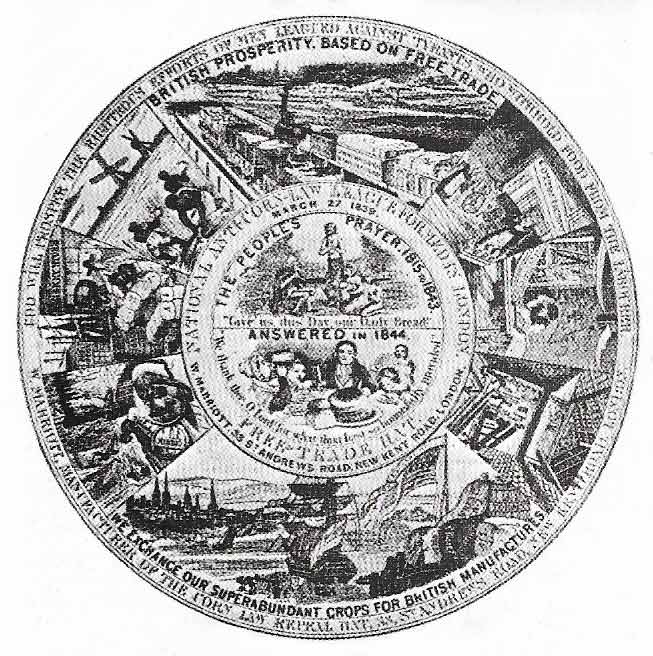
Figyre 2. The Corn Laws of 1815 protected British agriculture by prohibiting the importation of foreign wheat until the domestic price exceeded 80 shillings per quarter. These laws were widely opposed by the urban poor and also by the industrialists because it was generally thought that they forced up the price of food and wages. In the long term too, it was argued that protection would harm exports. In 1839, the Anti-Corn Law League was founded by Richard Cobden (1804–1865) and John Bright (1811–1889) to agitate for repeal. In attacking the privilege and sectional interests behind the laws, the league took on a reformist appearance. The Corn Laws were repealed in 1846.
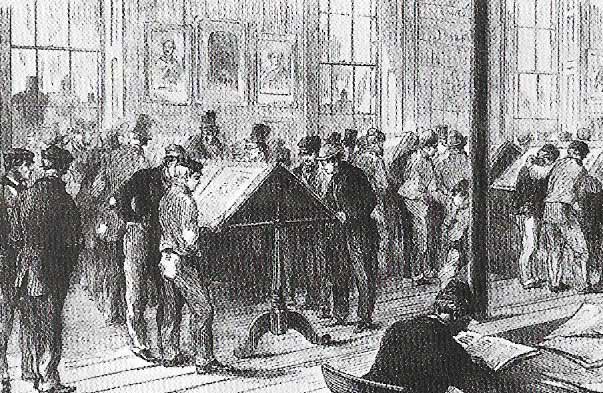
Figure 3. No free public libraries existed before 1854. From the mid-century, however, many towns set up rate-assisted public libraries to provide access to books and newspapers for all classes.
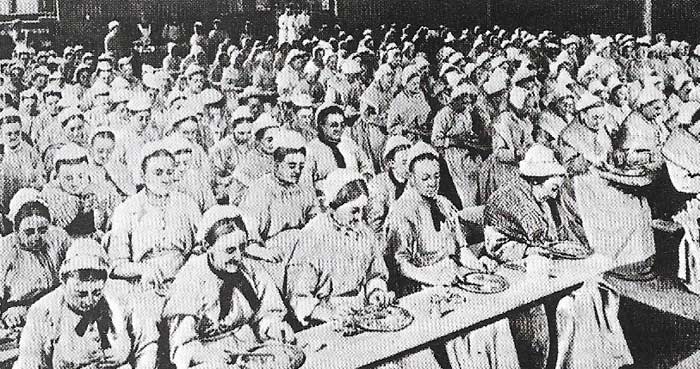
Figure 4. Under the New Poor Law of 1834, workhouse conditions were to be made inferior to those of the poorest laborer outside, in order effectively to deter "laziness" and vagrancy" among the poor.
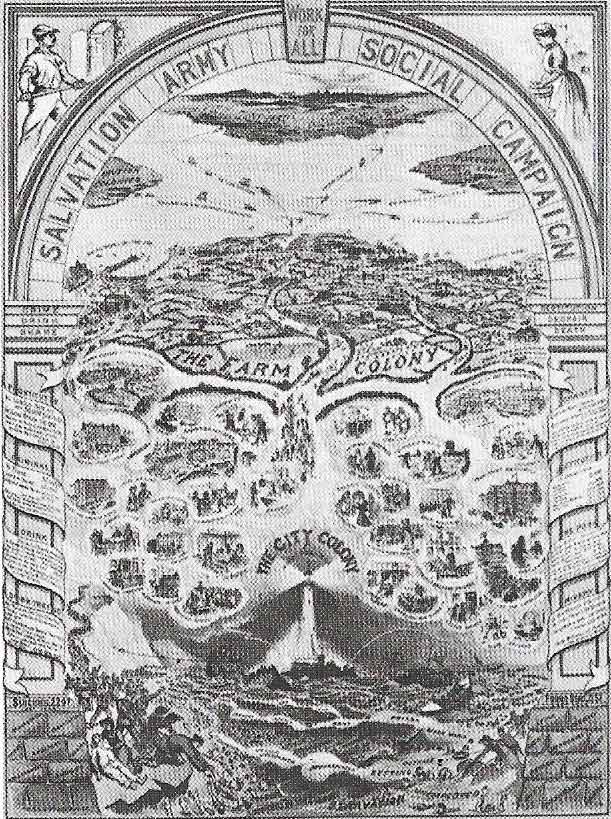
Figure 5. The Salvation Army, founded by "General" William Booth (1829–1912) in 1865, aimed at social as well as spiritual welfare. It provided soup kitchens, night shelters and many facilities for the destitute. Booth was particularly concerned at the adverse effects of urbanization and the depopulation of the countryside. He hoped that through a system of rural re-education he reverse this trend.
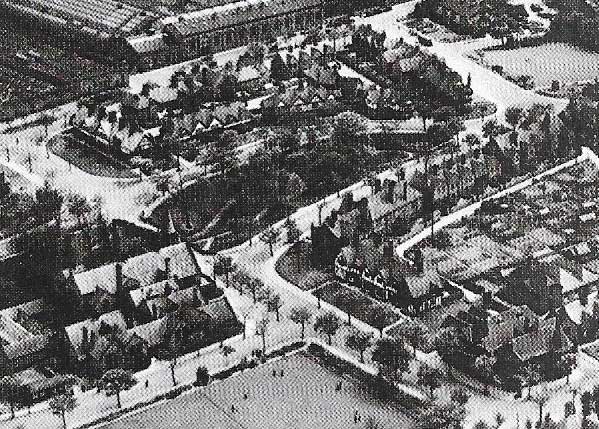
Figure 6. Private philanthropy in the 19th century very often preceded state action by many years. Port Sunlight, shown here, was built by the industrialist Lord Leverhulme (1851–1925) in 1888. It was the first village to be built on the garden city principals, then advocated as a means to eliminate the physical and moral effects of urban overcrowding by Ruskin and other social reformers. This is shown in the planned houses, open spaces, and the provision of public amenities.
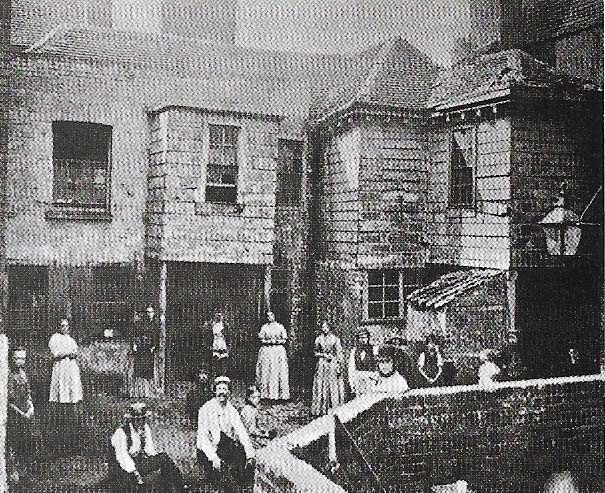
Figure 7. Chronic over-crowding and grossly inadequate facilities characterized the towns that mushroomed during the Industrial Revolution. The sheer scale and complexity of the problems were quite unprecedented, and unnoticed until social reformers, philanthropists and the unavoidable pressure of events forced them upon public notice.
The rapid increase in population and new industrial towns during the Industrial Revolution created immense social problems in Britain. The new towns had grown uncontrolled, many lacked basic amenities such as sanitation and water supply, and the problems of poverty, ill-health, crime and bad housing were widespread. There was almost no schooling for most of the population. Child and female labor was regularly used in factories and mines (Figure 1), even for the most arduous and dangerous tasks. The prevailing ethic of laissez-faire that the state should not interfere with the workings of the economy or society held back any far-reaching legislation to improve the working conditions.
Poverty and social concern
During the course of the 19th century some of these evils were diagnosed and brought to public notice by social commentators (Figure 6) and novelists such as Charles Dickens (1812–1870), Mrs Gaskell (1810–1865) and Charles Kingsley (1819–1875). In addition, parliamentary enquiries were set up to examine social questions. The result was a considerable body of social legislation. The Poor Law was a source of concern to 19th-century reformers. The existing system of "outdoor" relief, levied from the parish rates, burdened the propertied classes, and Thomas Malthus (1766–1834) in his influential Essay on the Principal of Population (1798) had argued that it perpetuated poverty by encouraging population growth. Under the Speenhamland system, introduced in 1795, laborers' wages were subsidized out of parochial funds on a scale linked to the price of bread. But in the large industrial towns, the parochial organization of poor relief was totally inadequate to meet the strains of heavy unemployment.
In 1834 the New Poor Law was passed. It much reduced "outdoor relief". Instead of receiving charity, all able-bodied people requiring relief were forced to go into the workhouse, where a strict regime, including segregation of the sexes, even of married couples, was intended to deter all but the truly destitute (Figure 4). In addition, poor law authorities were amalgamated to spread the burden of poor relief evenly.
The insanitary conditions of the great towns gave rise to considerable concern about public health. In the 1840s an inquiry showed that more than half of the major towns in Britain had an insufficient or impure water supply. the cholera epidemics of the mid-nineteenth century acted as a spur to the public health movement. Edwin Chadwick's (1800–1890) famous Report on the Sanitary Conditions of the Labouring Population in 1842 led to the creation of a central Board of Health under the Public Health Act of 1848. Individual towns were empowered to set up local Medical Officers of Health. In 1875 a Public Health Act laid the foundations for an overhaul of public sanitation.
Legislation on housing
Housing reform was left to piecemeal action. Lord Shaftesbury's (1801–1885) Lodging Houses Act of 1851 checked the worst abuses of "doss-houses". More important, however, was the Artisans' Dwelling Act of 1875 which gave local authorities the power to clear slums. A number of reforms of local government, especially the Municipal Corporations Act of 1835 and the Local Government Act of 1888, provided the administrative machinery necessary to implement these measures on a local level.
 |
| Lord Shaftesbury was an evangelical churchman and a dedicated reformer. He is associated with the 1833 Factory Act and with legislation to prohibit the employment of children by chimney sweeps, in 1840, and women and children in mines, in 1842. But his overriding paternalism made him unsympathetic to franchise extension in 1867 and to too much state involvement in welfare. |
Factory legislation began as early as 1802 when Robert Peel senior (1750–1830), introduced an act to limit the employment of children to under 12 hours a day. The 1819 Factory Act forbade the employment of children in cotton mills under the age of nine. Lord Shaftesbury's 1833 Factory Act further limited the working hours of all children under 18 years old and appointed factory inspectors to enforce this. Safety regulations and limitations on women's working hours were introduced by an act in 1844. This legislation was extended in the course of the latter part of the nineteenth century to include all types of factories. In 1891, a consolidating act raised the minimum age for the employment of children to 11 years.
The rise of state education
Education remained a patchwork of private initiative and philanthropic effort for much of the 19th century. The Royal Lancastrian Association (1810) and the Anglican National Society (1811) founded hundreds of schools without any government involvement. State intervention began in the 1830s and the first government grant to education was made in 1833. In 1839 an education department was set up to inspect grant-receiving schools.
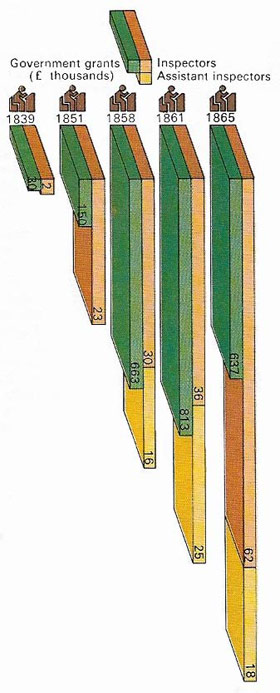 |
| The growth of education was a central feature of 19th-century reform. This diagram shows the rise in grants and school inspectors in elementary education between 1839 and 1865. |
In 1870, Forster's Education Act provided virtually free elementary education for anyone who wanted it by setting up local boards empowered to establish schools financed, in part, from the rates. Education up to the age of ten years was made compulsory in 1880. In 1902, the Balfour Education Act created Local Education Authorities and thoroughly reformed the whole system of secondary education.
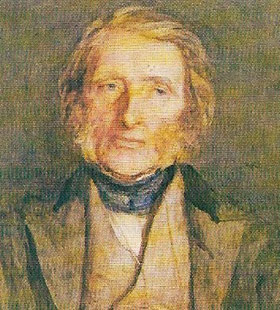 |
| John Ruskin (1819–1900) art critic and reformer argued that art, ethics and social conditions were inextricably linked. Many of his proposals, such as pensions and state education, were later adopted. |
The growth of state responsibility for social welfare was embodied in the legislation of the Liberal government's after 1906, which went a considerable way towards creating a rudimentary "welfare state", with important, new measures such as Old Age Pensions Act of 1908 and National Health Insurance Act of 1901.
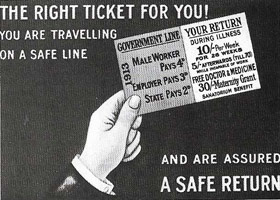 |
| The National Insurance Act of 1911 provided unemployment pay and free medical treatment in return for graduated weekly contributions to be paid by employers, employees and the state. |
